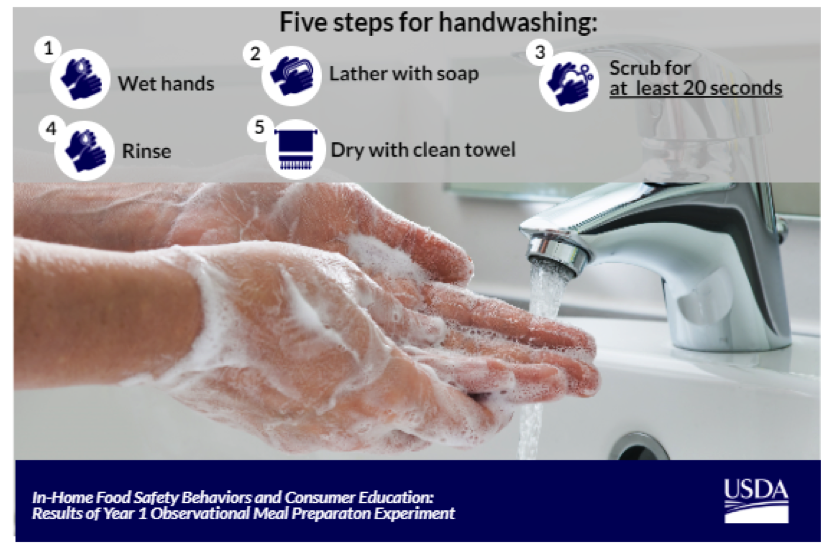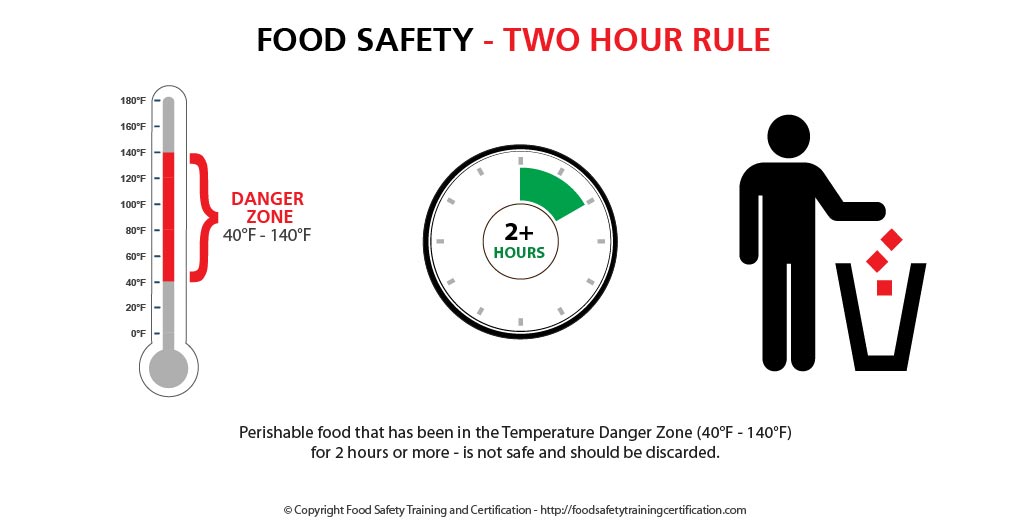College students are under a lot of pressure and they often get their meals the quickest and easiest way possible. When it comes to safely preparing meals, many college kids simply don’t know what it takes to make the grade in food safety, and many end up with a foodborne illness.
When students pack up for college, they take along the basics — TV, laptop, MP3 player and cell phone. Many students will also arrive at school with a microwave oven, tabletop grill, mini-fridge, and toaster-oven in tow. Most students, however, don’t know there are food safety considerations when cooking with these appliances.
 Image Source: Shutterstock
Image Source: Shutterstock College students are under a lot of pressure and they often get their meals the quickest and easiest way possible. When it comes to safely preparing meals, many college kids simply don’t know what it takes to make the grade in food safety, and many end up with a foodborne illness.
Likewise, with tons of social activities going on like football games and late night study sessions, it can be easy to forget about food safety. But, there is nothing worse than missing out on that huge championship game or major exam all because you are sick from foodborne illness.
- Learn about foodborne pathogens, cross contamination, cold and hot food safety, and best practices to prevent foodborne illness.
- Food Manager ANSI Certification: $99.00 - Valid in all States
- Food Handler Training: Only $7.00!
- 10% OFF: Enter Promo Code "train10off" at Checkout
The Basic Steps to Food Safety
- Clean. Wash hands and surfaces often.
- Separate. Don’t cross-contaminate. Keep raw meat, poultry, eggs and seafood, and their juices, away from ready-to-eat foods.
- Cook. Raw meat, poultry, seafood and egg products need to be cooked to the right temperature. Use a food thermometer to ensure foods have reached a high enough temperature to kill any harmful bacteria that may be present.
- Chill. Refrigerate food promptly. Do not leave food at room temperature for more than two hours, or one hour when the outside temperature is above 90°F (32.2°C).
 Image Source: Shutterstock
Image Source: Shutterstock Food Safety 101
Bacteria that contaminate food and cause foodborne illnesses are everywhere. Follow these basic safety tips to keep you safe.
1. Wash Hands and Surfaces Often
Wash your hands often, especially during these key times when germs can spread.
Keep kitchen surfaces clean by washing counters, cutting boards and equipment with soap and water immediately after use. Sanitize with a chlorine solution of 1 teaspoon liquid household bleach per quart of water, especially after contact with raw meats.
 Media Credit: USDA
Media Credit: USDA 2. Prevent Cross-Contamination
Use separate cutting boards and plates for produce, meat, poultry, seafood, and eggs:
- Use one cutting board for fresh produce or other foods that won’t be cooked before they’re eaten, and another for raw meat, poultry, or seafood. Replace them when they are worn.
- Use separate plates and utensils for cooked and raw foods.
- Wash thoroughly all plates, utensils, and cutting boards that touched raw meat, poultry, seafood, or eggs before using them again. Use hot, soapy water.
 Image Source: Shutterstock
Image Source: Shutterstock 3. Reduce Time in the Temperature Danger Zone
The “Danger Zone” for most foods is between 40°F and 140°F. Bacteria grow most rapidly in this range of temperatures, doubling in number in as little as 20 minutes.

4. Cook Foods to a Safe Temperature
Using a thermometer is the only reliable way to ensure safety and to determine that meat and egg dishes are cooked thoroughly. These foods must be cooked to an internal temperature high enough to destroy any harmful bacteria that may have been in the food.
Cook to the Safe Minimum Cooking Temperatures recommended by the USDA:
| Category | Food | Temperature (°F) | Rest Time |
|---|---|---|---|
| Ground Meat & Meat Mixtures | Beef, Pork, Veal, Lamb | 160 | None |
| Turkey, Chicken | 165 | None | |
| Fresh Beef, Veal, Lamb | Steaks, roasts, chops | 145 | 3 minutes |
| Poultry | Chicken & Turkey, whole | 165 | None |
| Poultry breasts, roasts | 165 | None | |
| Poultry thighs, legs, wings | 165 | None | |
| Duck & Goose | 165 | None | |
| Stuffing (cooked alone or in bird) | 165 | None | |
| Pork and Ham | Fresh pork | 145 | 3 minutes |
| Fresh ham (raw) | 145 | 3 minutes | |
| Precooked ham (to reheat) | 140 | None | |
| Eggs & Egg Dishes | Eggs | Cook until yolks and white are firm |
None |
| Egg dishes | 160 | None | |
| Leftovers & Casseroles | Leftovers | 165 | None |
| Casseroles | 165 | None | |
| Seafood | Fin Fish | 145 or cook until flesh is opaque and separates easily with a fork. | None |
| Shrimp, lobster, and crabs | Cook until flesh is pearly and opaque. | None | |
| Clams, oysters, and mussels | Cook until shells open during cooking. | None | |
| Scallops | Cook until flesh is milky white or opaque and firm. | None |
Food Storage Safety: Refrigerator & Freezer
The right temperatures slow the growth of dangerous bacteria. Put a refrigerator thermometer in the refrigerator and adjust the refrigerator temperature control, if necessary. Put a second thermometer in the freezer. Your refrigerator should register at 40°F (4°C) or below and your freezer at 0°F (-18°C).
Use ready-to-eat, refrigerated foods within a few days. The longer they’re stored in the refrigerator, the more chance bacteria has to grow.
| Food | Refrigerator | Freezer |
|---|---|---|
| Note: Foods kept in the freezer longer than recommended are safe, but their quality may not be as good. | ||
| Bacon (opened) | 5-7 days | Not recommended |
| Bacon (unopened) | 2 weeks | 1 month |
| Beef roasts & steaks, raw | 3-5 days | 6-12 months |
| Cheese – hard types | 6-12 weeks | 6-12 months |
| Cheese spreads | 3-4 weeks | Not recommended |
| Deli-sliced luncheon meats | 3-5 days | 1-2 months |
| Eggs – fresh in shell | 3-5 weeks | Not recommended |
| Eggs – hard-cooked | 1 week | Not recommended |
| Egg, tuna and macaroni salads | 3-5 days | Salads made with mayonnaise do not freeze well. |
| Gravy and meat broth | 1-2 days | 2-3 months |
| Ground beef & stew meat, raw | 1-2 days | 3-4 months |
| Ham slices (fully cooked) | 3-4 days | 1-2 months |
| Hotdogs and luncheon meats (unopened) | 2 weeks | 1-2 months |
| Hotdogs, luncheon meats (opened) | 3-7 days | 1-2 months |
| Ice cream | 2 months | |
| Meat (cooked) | 3-4 days | 2-3 months |
| Milk (fresh) | 5-7 days | Not recommended |
| Pizza | 3-4 days | 4-6 months |
| Pork roasts & chops, raw | 3-5 days | 4-6 months |
| Poultry (cooked) | 3-4 days | 4-6 months |
| Poultry (raw) | 1-2 days | 9-12 months |
| Salad dressings (opened) | 3 months | Not recommended |
| Soup – meat added | 1-2 days | 2-3 months |
| Soup – vegetable | 3-4 days | 2-3 months |
| Yogurt | 7 days | Not recommended |
| Fruits (fresh): | ||
| Apples | 3 weeks | Fruits may need ascorbic acid to prevent browning when frozen, and the addition of sugar for best quality. Store in freezer containers. |
| Grapefruit, lemons, limes, oranges | 2 weeks | |
| Melons | 1 week | |
| Grapes, peaches, pears, plums | 3-5 days | |
| Berries, cherries | 2-3 days | |
| Vegetables (fresh): | ||
| Carrots | 2 weeks | Most vegetables need to be blanched or cooked before freezing to maintain quality. |
| Celery, cabbage, chilies, lettuce head (unwashed), peppers, tomatoes | 1 week | |
| Beans, broccoli, greens, peas, summer squash | 3-5 days | |
| Mushrooms, okra | 1-2 days | |
 Image Source: Shutterstock
Image Source: Shutterstock More Food Safety Resources
- Recalls.gov: Online Resource for Federal Recalls (Federal and Industry Initiated Recalls) Recalls.gov
- U.S. Centers for Disease Control and Prevention (CDC), Division of Bacterial and Mycotic Diseases, Food Safety Initiative
www.cdc.gov/foodsafety
Agents, Diseases, & Other Threats
Food Safety Activities
News and Media Relations - U.S. Food and Drug Administration, Directory of State and Local Officials
www.fda.gov/ora/fed_state/directorytable.htm - U.S. Food and Drug Administration, Hazard Analysis and Critical Control Point Database
vm.cfsan.fda.gov/%7Elrd/haccp.html - U.S. Department of Agriculture (USDA)
www.usda.gov - U.S. Department of Agriculture, Food Safety and Inspection Service (FSIS)
www.fsis.usda.gov - U.S. Department of Health and Human Services (HHS)
www.hhs.gov - USDA/FDA Foodborne Illness Education Information Center
www.nal.usda.gov/foodborne
